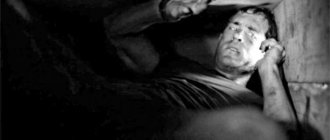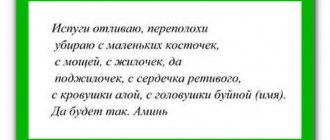What is isotherapy
While drawing, a person does not think about anything; he expresses his thoughts and feelings with the help of paints. This direction appeared in psychology in the middle of the 20th century and soon moved into the arsenal of teachers. With the help of isotherapy for children, you can influence negative emotions.
Classes are especially relevant for children. Due to their age, they cannot express emotions and do not talk about their experiences. During drawing, emotions that have not found a way out in the child fade away. Good bright feelings appear.
Isotherapy classes with children
School is a rather difficult stage for any child. The first days and years of school are the most stressful, as children's daily routines, responsibilities, and needs change significantly. Isotherapy, which is used at this stage, helps in adaptation to the emerging conditions.
It is better to conduct classes by two psychologists. The number of children in one group is up to 6 people. Class duration is 60 minutes, once a week.
- At the first stage of isotherapy classes with children, leaders are introduced and identified.
- At the second stage, emotions are expressed, which can be negative in children.
- At the third stage, children begin to recognize their own emotions and express them in a variety of ways.
- At the fourth stage, tension and anxiety intensify.
- At the fifth stage, tension and anxiety are relieved.
Who needs isotherapy
Isotherapy allows the child to express himself. At this moment, no one is in charge of him. The drawings change as the problem is solved. It is important for the teacher to save all the child’s work in order to see progress in the future.
The main goals of isotherapy:
- working through thoughts that the child suppresses;
- a person expresses thoughts that he cannot express due to fear or resentment;
- upon completion of drawing, the psychologist must determine the area in which the child is having trouble;
- during the course, a person begins to manage the situation, relieves the burden of problems and understatement;
- relationships between people return to normal, tension is relieved during the lesson, the child understands and accepts himself.
This method is important for children and adults:
- For disabled children who are cut off from the big world. The method allows you to see the positive aspects.
- Children with attention deficit disorder. They find an outlet for aggressive emotions.
- Children who find it difficult to establish contact with peers.
- Children and adults in transitional stages of life. Entering school, adolescence, loss of a loved one are the reasons for which isotherapy is needed.
Isotherapy methods
This line of therapy performs many functions. Various methods of isotherapy allow a child to express himself, consider a conflict situation from any angle, see options for solving it, throw out emotions, etc. If a child cannot directly express thoughts about his experiences, then paper will help him.
Isotherapy incorporates the foundations of the theories of Freud, Jung and humanist psychologists. Concepts used here include spontaneity, freedom, creativity and self-expression. No one controls the child during the therapy process. He portrays what he personally wants, without any punishment (which is what parents most often scare their children with, which leads to complexes, fears and problems).
Isotherapy can take place in two formats:
- Passive – when the child redraws the finished image.
- Active – when complete freedom is given in drawing what the child wants. The plot and motive of the drawing can be the way the child sees it.
Although isotherapy is one of the areas of art therapy, it is increasingly becoming independent. It has its own concepts, methods and directions. The materials used are:
- Plasticine.
- Paints.
- Colored paper.
- Pencils.
- Markers, etc.
Isotherapy does a lot of work when communicating with children. The baby can talk about his problem, express his feelings, dreams, emotions, experiences, hopes. Also, through the drawing, he begins to understand himself (after all, the problem arose in him, and therefore defines him as a person). Through the drawing you can see ways to solve the problem. Since it is difficult for a child to analyze and think in complex definitions, it is better for him to see what is happening in ordinary pictures. When a child sees his problem, he understands it better and can find a solution.
The isotherapy process lasts exactly as long and as deeply as is convenient for the child. There is no compulsion here. The kid tells exactly as much as he wants or can. Thus, isotherapy helps relieve nervous tension, stress, and eliminate neuroses and fears. Through his own drawing, the baby can painlessly come into contact with a situation that is unpleasant for him. In this case, he worries less and can understand more.
Quite often, parents encounter problems in the self-perception or behavior of a preschool child. Already at this age, the child is faced with the first impossibility of coping with emerging problems. He has more and more responsibilities and difficulties in communicating with his parents, who raise the bar for their demands and reduce their sensitivity to childhood experiences.
If a preschooler is left on his own with his problems, which he often cannot cope with because he does not yet know how to think logically and consistently, analyze, understand the actions of others, etc., then he changes. The parents begin to notice that he suffers from nightmares, his self-esteem decreases, he becomes unstable, his behavior becomes aggressive, he becomes jealous, he is uptight, or he becomes a loner (outcast).
Isotherapy is also used when working with severe mental disorders:
- Mental retardation.
- Speech and hearing impairment.
- Autism.
- Pathologies of the nervous system.
Through a drawing, a psychologist or teacher can establish contact with a child.
The process of isotherapy can be divided into several stages:
- Determining the theme of the drawing or free-form drawing.
- Observing the child's emotions while he draws.
- The child's description of what he drew. Attention is paid to what emotions he shows and how he interprets the situation.
- The psychologist’s expression of his opinion on what is shown in the picture.
- Working together to find a solution to the drawn situation.
All drawings are saved because they can then be compared with each other, observing the dynamics of development and change. If there is no change in the desired direction, the psychologist changes the tactics of his work.
To summarize, we can highlight the following goals of isotherapy:
- Working through the experiences and thoughts that a person suppresses within himself.
- Expression of emotions and feelings that a person could not express in everyday life.
- Diagnosis of the human condition.
- Facilitation of treatment.
- Regaining control over the situation.
- Establishing contact between client and psychotherapist.
- Increasing your self-esteem, relieving stress.
- Understanding your problem and yourself in it.
Solvable children's problems
Isotherapy as a method of psychological correction allows you to resolve the child’s internal conflict. Bring out thoughts and feelings, solve psychological problems:
- the child learns to express his thoughts, talk about what worries him;
- through drawing, children identify dreams and desires that are often not voiced to adults;
- knowledge of the inner world, problem identification;
- accepting oneself, finding ways to solve difficulties;
- relieving stress and psychological tension;
- correction of children's development with an individual education program.
Forms of isotherapy
When conducting classes, the teacher determines the form of training depending on the methods of isotherapy. There are 2 main forms of the technique:
- Passive form. The child is given a picture depending on the situation. You need to draw the same picture, but in your own way.
- Active form. The teacher does not set any tasks. The drawing is completely arbitrary, at the request of the child. Based on imaginary objects, further interaction between the adult and the child is determined.
Most often, the teacher gives an assignment on a specific topic. It could be summer, family, New Year. Tasks for imaginative thinking require flights of imagination from the child. Such topics could be: “Good”, “Peace”.
Other methods of involving children in the process can be non-standard - colored spots, finger painting, improvised materials.
Main stages of isotherapy
The art therapist builds communication in such a way that the child shares the sensations that arise when drawing. Isotherapy allows you to look at the conflict from the outside. The child expresses himself while drawing. Isotherapy technology consists of several stages:
- The child, together with the teacher or independently, determines the topic on which he will draw. The adult’s task is to follow the entire process of creating a picture on a piece of paper.
- At the next stage, the child tells what is shown in the picture. The mentor pays attention to the parallels that the child draws, to the mood with which the story goes. Attention is paid to detail. If something in the picture is negative, then find out what it means for the baby.
- The psychologist describes his vision of the drawing.
- An adult and a child discuss the picture together.
Isotherapy exercises
For example, you can suggest trying an isotherapy exercise called a trip to the clearing. For it you will need certain previously prepared material: audio recordings with forest sounds, a sandbox or a box of sand, character figures and other toys, sheets of paper, paints, pencils and markers, water.
Usually the exercise begins with relaxation and relaxation. To do this, children are welcomed and started to talk with them in order to create a feeling of a group, a team, and also build trust between them and adults. Children are seated in a circle and a text is read to them, a story, in parallel with which they perform exercises aimed at warming up and relaxing. The next stage is the creation of a “magic meadow”. Children are invited to play in a sandbox with wet sand, where they can create anything themselves and place characters there. At the same time, the psychologist explains to them that they cannot destroy what was done nearby by another “wizard”. After the game, the final isotherapy occurs - the children sit together at a large table and, at the request of an adult, draw pictures that they felt under the impression of the game.
Pedagogical isotherapy
Isotherapy as a method of psychological correction is used in pedagogical activities. First of all, the method is aimed at the development, education and socialization of the individual. Taking care of your emotional well-being and psychological health is required.
As a result of work, self-knowledge occurs. Relationships with peers improve. The child learns to analyze actions and be more tolerant. While drawing, he experiences strong emotions and overcomes difficulties.
Children are in stressful situations more often than adults. Their psyche is not ready for constant stress. The situation is aggravated by improper upbringing, authoritarian style of parents, misunderstanding of peers.
Art therapy allows you to break away from reality and feel like a wizard. The child learns to experience negative emotions through drawing. The influence of fine art on the psychological state is confirmed by research by psychologists, teachers, philosophers, and psychotherapists.
Drawing allows you to protect yourself from what prevents you from fully developing. Isotherapy is a method of symbols. Objects are depicted on a subconscious level, symbolizing images, fears, failures.
Isotherapy as a correction method is used when working with children with various disabilities. The beauty of the drawing does not matter. Everyone can feel like an artist. The teacher helps the child find a way out of the situation using drawing or modeling.
III. Isotherapy as a method of art therapy
Isotherapy is one of the areas of art therapy that is popular today. This term refers to all kinds of activities with children, which are based on various methods of fine art.
Isotherapy was first used as a method of psychological correction in working with children taken from Europe to the USA during the Second World War. It was treatment with fine arts that helped the children cope with severe psychological trauma and return to normal life.
Today, the use of various isotherapy methods in working with children is extremely popular among modern psychologists and teachers. Basically, isotherapy exercises are used as a psychological effect on children. Thus, through a drawing, a psychologist will be able to understand the baby’s inner world and figure out what is bothering him. Meanwhile, there are a number of problems associated with children's health, in the treatment and correction of which various isotherapy techniques are successfully used, for example:
· various mental traumas;
· neuroses;
· depression;
· anxiety;
· autism;
· delayed mental and speech development.
Isotherapy methods help children cope with various problems and stress and calm the nervous system. After classes, children’s sleep often normalizes and aggression disappears.
When working with children, any materials that are related to the fine arts are used - paints, pencils, plasticine, colored paper, etc. All this is used in an active form of art treatment, that is, when creating your own works of art.
In addition, some isotherapy exercises have a passive form, in which ready-made drawings and other works of art are used in the work.
Another significant advantage of art therapy is that it has no contraindications and gives amazing results both when working with children and adolescents, and when working with adults. Art therapeutic practice is based on the fact that the most important thoughts and experiences of a person, which are the product of his unconscious, can be expressed in the form of images rather than in words. It is extremely difficult for children to verbalize their states and reflect on them, especially for children who have experienced severe psychological trauma, so art therapy classes are the best way for a teacher to work with a child’s condition, bypassing words and consciousness. In the process of the creative act, internal conflicts are experienced again and, ultimately, resolved.
Thus, we can conclude that one of the main methods of art therapy is visual arts therapy, primarily drawing. It is based on a special “signal color system”, according to which a participant in the technology signals his emotional state through color. Isotherapy helps children cope with various problems and stress and calm the nervous system.
IV. Features and effectiveness of the isotherapy method
As soon as a child picks up a brush, plasticine or modeling clay, he releases his subconscious. The end result is healing through self-expression of creativity. When considering methods of working with children, art therapy is one of the most effective methods. And, perhaps, one of such healthy hobbies in art therapy is visual arts. The result doesn’t matter, what’s more important is the process itself: smearing, splashing, mixing, selecting or impulsively painting with paints - it will be beautiful!
A familiar situation, the child sits, puffs, tries and clearly draws the contours. Here we have the sun, the sky, a house, a dog, people, a field or a boy from the neighboring yard. It would seem that children draw understandable things, but through them they express their inner world, state of mind, emotions. Give children paints and pencils, a piece of paper and complete freedom! Real discoveries await you.
Drawing has long become a separate section in psychology and even a means of curing children from various ailments. After all, it is through the color, shape and presentation of the drawing that the child eloquently says what he will never say out loud. It also develops thinking, coordination, imagination and teaches patience.
The world of drawing is as limitless as a child’s imagination, so you don’t always have to take a literal approach to reading images. For example, black and gray tones are not necessarily melancholy and negative. Perhaps the child is simply experimenting and looking for a use for this color. Or characters from fairy tales, heroes of popular cartoons, difficult to recognize - this is a reason to rejoice at the director’s reading of the child. This is how he felt the idea. You cannot put children’s creativity at any age into a framework and try to understand it literally. As well as the drawings themselves, which adults often do not understand due to the lack of clarity, smoothness of lines and the academic quality that they are accustomed to and are trying to impose. It is much more effective to make this process art therapy and a relaxation tool.
Isotherapy gives positive results when working with difficult children, helping them cope with their psychological problems. There are a lot of isotherapy techniques.
Art therapy is not just drawing lessons, but free creativity, using various techniques, techniques, materials that help children throw out their fears, emotions, relieve tension, anxiety, and create their own healing symbols.
Isotherapy can help achieve the following goals:
1. Give a socially acceptable outlet for aggressiveness and other negative feelings. Working on drawings, paintings, and sculptures is a safe way to let off steam and relieve tension.
2. Facilitate the correction process. Unconscious internal conflicts and experiences are often easier to express through visual images than to express them in the process of verbal psychotherapy.
3. Work through thoughts and feelings that the student is used to suppressing. Sometimes nonverbal means are the only way to express and clarify strong feelings and beliefs.
4. Establish relationships between teacher and student. Participating in artistic activities together can help create relationships of empathy and mutual acceptance.
5. Develop a sense of internal control. Working on drawings and paintings or sculpting involves arranging colors and shapes.
Isotherapy classes allow you to solve the following important pedagogical tasks:
1. Educational
Interaction is structured in such a way that children learn correct communication, empathy, and caring relationships with peers and adults. This contributes to the moral development of the individual. An open, trusting, friendly relationship with the teacher develops.
2. Corrective
The image of “I”, which previously could have been deformed, is quite successfully corrected, self-esteem improves, inappropriate forms of behavior disappear, and ways of interacting with other people are improved. Good results are achieved when working with some deviations in the development of the emotional-volitional sphere of personality
3. Medicinal
The “healing” effect is achieved due to the fact that in the process of creative activity an atmosphere of emotional warmth and goodwill is created. Feelings of psychological comfort, security, joy, and success arise. As a result, the healing potential of emotions is mobilized.
4. Developmental
Thanks to the use of various art therapeutic techniques, conditions are created under which each child experiences success in one or another activity and independently copes with a difficult situation. Children learn to verbalize emotional experiences, openness in communication, and spontaneity. In general, a person’s personal growth occurs, experience of new forms of activity is gained, abilities for creativity, self-regulation of feelings and behavior develop.
5. Diagnostic
Art therapy allows you to obtain information about the development and individual characteristics of the child. This is the correct way to observe him in his independent activities, to better know his interests, values, to see his inner world, and also to identify problems that are subject to special correction.
During classes, the nature of interpersonal relationships and the real position of everyone in the team, as well as the characteristics of the family situation, are easily revealed. Possessing multifaceted diagnostic capabilities, it can be classified as a projective test.
Thus, the isotherapy method is an effective method for reducing anxiety levels in children and adolescents, as well as a method aimed at preventing deviant behavior. Creative activity helps a child find himself, realize his potential, overcome his fears and insecurities, and also helps to obtain information about the development and individual characteristics of the child.
V. Practical part
The purpose of work on isotherapy for junior schoolchildren:
1. Increasing the emotional-positive background, creating favorable conditions for the successful development of the child;
2. Improving the elements of self-regulation, training the sequence of actions, extinguishing hyperactivity;
3. Harmonization of emotional state, stress relief, tactile stimulation;
4. Development of fine motor skills and creative imagination.
Advantages of isotherapy over other forms of work:
• almost every child (regardless of his age) can participate in isotherapeutic work, which does not require any visual abilities or artistic skills from him;
• isotherapy is a means of predominantly non-verbal communication. This makes it especially valuable for those who do not speak well enough and find it difficult to verbally describe their experiences;
• visual arts are a powerful means of bringing people together. This is especially valuable in situations of mutual alienation, when it is difficult to establish contacts;
• products of visual creativity are objective evidence of the child’s moods and thoughts, which allows them to be used to assess the condition and conduct relevant research;
• isotherapy is a means of free self-expression and presupposes an atmosphere of trust, tolerance and attention to the inner world of a person;
• isotherapeutic work in most cases evokes positive emotions in children, helps to overcome apathy and lack of initiative, and form a more active life position.
Advantages of using elements of isotherapy in classes:
— the work does not require the student to have any creative abilities;
— helps through nonverbal communication to take the first steps towards self-knowledge and self-discovery;
— used to assess the condition of students; helps overcome bad mood, apathy, lack of initiative;
- helps students see the uniqueness of everyone in the group;
— an atmosphere of trust, tolerance and attention reigns; helps to accept every child
The forms of art therapy when working with children and adolescents are different. The two main options are individual and group.
Materials used:
• Paints made from flour, more than other materials, allow one to reflect emotions and moods and embody images.
• Watercolor allows you to apply strokes in different ways: bright and dull, clear and blurry, heavy and light, thereby revealing the degree of expression of certain emotions.
• Wax crayons have a very intense color. They are significantly harder than other materials, which allows you to train mental self-regulation skills.
• Felt pens require strict control while drawing. Drawing with felt-tip pens can reveal a child’s fear of the richness of his own experiences and sensations
• If a child, despite the proposed color material, chooses a simple pencil , it means that something may be preventing his emotional expression. Blackened areas often indicate depressive disorders or major depression.
• Sand allows you to develop “manual intelligence”, promotes the harmonious and intensive development of cognitive functions and communication skills. In addition, sand and water help get rid of negative energy.
• Colored semolina (8 colors of M. Luscher: gray, dark blue, blue-green, red-yellow, yellow-red, red-blue or purple, brown, black) helps to remove cognitive attitudes; creations created with its help provoke emotional saturation. The use of semolina is effective in working with anxious, timid children.
• Colored dough develops motor skills, causes emotional saturation, and allows you to vividly convey images.
• Large format paper encourages wide, free movement, eliminating the control and restrictions required when working with small formats.
Art therapy methods used to correct the emotional sphere of students
Individual drawing.
Purpose: This exercise is great for getting started. It awakens creativity in group members, allows them to become aware of their emotions and helps them get to know each other.
The required time for classes is 30 minutes. Materials: paper, pencil, crayons, paints. Maybe plasticine or modeling clay
Lesson Procedure: Students should not be short of materials. Everyone finds a place where they can be alone with themselves. For about 2 minutes he collects his thoughts, listens to his feelings. He does not need to think about the artistic side of the upcoming work. Let him just take a pencil and start drawing. To express your feelings, lines and shapes. You can draw in color. The task of the draftsman is to symbolically depict his condition, no matter how he feels - on the rise or decline. Let him draw whatever comes to his mind. When children finish drawing, they can exchange impressions about their own and other people's works, without giving them ratings.
For variety, you can use not only pencils, but also chalk, paints, and clay. In any case, the main thing for participants is to trust their feelings and try to find meaningful information about themselves in their works. Everyone uses this exercise to awaken their imagination and reflect their inner state in images.
Pair drawing
The purpose of this exercise is to study interpersonal relationships and conflicts.
This lesson requires 1 hour. Materials: paper, colored pencils, crayons.
Procedure: each child chooses a partner. A large sheet of paper is placed between them, and everyone receives a lot of crayons. Paper space for joint drawing. Partners begin spontaneously drawing on a common sheet of paper, thus expressing their feelings. They communicate only through lines, shapes and colors.
After finishing drawing, partners can discuss their impressions. They can talk about the emotional reactions of one to the drawings of the other, pay attention to the parallels between the features of the drawings and the behavioral features that the authors of the drawings demonstrate to the group. At the same time, each partner tries to learn something about the other.
Group drawing.
This activity allows everyone in the group to contribute to the creation of the drawing. It is an excellent tool for identifying role relationships in a group and the influence of some participants on the individual experiences of others.
Each child takes a sheet of paper and colored pencils, pens or crayons. Everyone sits in a circle. Everyone begins to draw what they see fit. At the leader’s signal, everyone passes on their completed drawings to the neighbors on the left and receives other people’s drawings from the neighbors on the right. After this, everyone continues the drawing they started, as if it were their own, making changes and additions to it. At the next signal, the drawings are again transmitted to the left and received from the right, and the received ones are completed. This continues until everyone gets the drawing they started. Participants are encouraged to recognize the feelings they have when they see something they started being continued. Everyone is free to leave or change in any way what others have completed. Finally, students discuss their impressions.
A session using isotherapy is carried out in 4 stages:
Introduction and warm-up.
Introduction and “warm-up”. Involves welcoming and preparing participants for work, as well as creating an atmosphere of trust and safety. The teacher explains or reminds the basic rules of behavior in the group.
The subsequent “warm-up” consists of different types of physical activity and ways of “tuning in” to visual work: a general game “on the topic”, a mini-conversation.
Stage of visual work
Presentation and development of the topic, maybe a small discussion. Considering the small age of the participants, it is advisable to organize this stage in the form of telling or dramatizing a fairy tale, a game or a trip. You can invite children to “live” the image in motion (Imagine that smooth, gentle music began to sound in you. How will you move).
Discussion stage
The discussion consists of participants' stories or comments about their visual work. They not only describe what is drawn, but usually try to compose a fairy tale about the depicted character.
When participants talk about their work, others generally refrain from making any comments or evaluations, but may ask questions of the author.
At this stage of the lesson, the teacher can give his own comments or assessments of the progress of the work, its results, the behavior of individual participants, etc. The teacher can also ask questions to the author aimed at clarifying the content of his work, as well as his experiences and thoughts.
Completion
End of the lesson. Involves summing up and strengthening positive emotional experiences.
Options for completing the lesson:
• “Give a smile”
• “I want to give you...”
• “Give the warmth of your heart”
• “Scroll of wishes”, etc.
Conclusion
Currently, art therapy techniques are becoming increasingly popular. Art therapeutic work is of particular value for children who experience certain difficulties in verbalizing their experiences, for example due to speech disorders, autism or lack of contact, as well as the complexity of these experiences and their “inexpressibility”. This does not mean that art therapy cannot be successful with children who have well-developed verbal communication abilities. For them, this activity can be an alternative “language”, more precise and expressive than words.
There is no reason to say that there are any contraindications to the participation of certain children in the art therapeutic process. Art therapeutic work evokes positive emotions in children, helps overcome apathy and lack of initiative, and form a more active life position.
Art therapy, used in working with children, can be rightfully presented as a health-saving innovative technology, which can manifest itself through a system of methods of spontaneous creativity along with other technologies of psychological and social work.
The effectiveness and undoubted benefits of using art therapeutic techniques in working with children are convinced by the following:
Ø The children attended classes with pleasure and treated their works with care. They also confidently used the time allocated for work and divided into stages. Although not everyone worked at the same time.
Ø children have overcome communication barriers;
Ø It is interesting to note how the children mastered new materials. Introverted, shy children touched the paints with caution, but, looking at the others, they overcame their uncertainty and by the end of the lesson they acted more freely.
Ø I would like to note that from lesson to lesson the interaction of children became more and more active. This was especially evident in the process of creating paired and collective works. Working in pairs often caused disputes among students. But in the process, the children managed to find a common solution, and they were happy to present the result during the discussion.
Ø Comparing children’s statements during discussions at the beginning and end of the year, it can be noted that they have become more detailed and conscious. Most had no difficulty in composing fairy tales based on their own works. Even those who at first could not say anything at all wrote short stories and could answer questions based on their drawings.
Conclusions: with the help of isotherapy, children overcome fears and shyness, their emotional mood improves, emotional stress, aggressiveness, anxiety decrease, and the psychological climate in the team improves.
Bibliography
1. Art therapy: Reader / Ed. A. I. Kopytina. – St. Petersburg: Peter, 2001. – 320 p.
2. McNiff S. Creativity beyond the usual: expanding the possibilities of psychological research through art // Healing art: a journal of art therapy. – 2002. – Volume 5, No. 2. – P. 8-25.
3. Kiseleva M.V. Art therapy in working with children. - St. Petersburg: Rech, 2008.
4. Ametova L.A. “Formation of art therapeutic culture among junior schoolchildren. I’m my own art therapist.” M., 2003.
5. Kiseleva M.V. Art therapy in working with children: A guide for child psychologists, teachers, doctors and specialists working with children. - St. Petersburg: Rech, 2006. – 160 p.
6. Kopytin A.I., Svistovskaya E.E. Art therapy for children and adolescents. — Cognito Center, 2007.
7. Krol, V.M. Psychology and pedagogy: Proc. manual for technicians universities / V.M. Krol - M.: Higher School, 2001
8. Schottenloher G. Drawing and image in Gestalt therapy. - M.: Pirozhkov Publishing House, 2002.
9. Art therapy - new horizons / Ed. A.I. Kopytina. – M.: Cognito-Center, 2006. – 336 p.
Internet resources:
https://womanadvice.ru/izoterapiya-kak-metod-psihologicheskoy-korrekcii
Annex 1
Isotherapy program for preschoolers
In preschool age, a child learns to communicate with peers, perceive the world around him, and create drawings on paper. The isotherapy program for preschoolers is an important stage in a child’s development and character development.
Depending on the child’s individual characteristics, classes are conducted to correct his behavior. For a hyperactive child, you can conduct an activity using colorful leaves. The child is given sheets of paper and paint. It is necessary to make each sheet one color.
Clay painting is a great way to relieve stress. On a blank sheet of paper, with fingers dipped in clay, the child draws any picture.
To improve communication skills, you can ask your child to draw a circle, and inside draw everything that mom, dad and other close relatives want.
The game “Chalk Race” is suitable for an aggressive child. The goal is to quickly draw lines; whoever draws the most wins. This game allows you to throw out aggression and calm a raging baby.
Isotherapy for schoolchildren
At the age of 7, significant changes occur in a child’s life. He is going to school. A new teacher, classmates and responsibilities to cope with. The goal of isotherapy is to support the student and help him cope with a stressful situation. The following activities are suitable for this age:
- Drawing various doodles for a few minutes will allow you to relieve stress and switch;
- Drawing friends on wet paper helps to establish contacts in a new society; such drawing is suitable for children who feel uncomfortable with classmates;
- If a child is afraid of new circumstances, invite him to fashion the fear; over time, the fear will begin to transform into a less scary monster.
Isotherapy for teenagers
Isotherapy as a method of psychological correction for adolescents is used less frequently than for younger schoolchildren. At this age, some children are able to express emotions and voice fears. Adolescence is filled with physiological and psychological changes. During a crisis period, specialist intervention is required. Isotherapy will help in the prevention and treatment of complex conditions.
To combat nervousness, a teenager can draw on whatever he wants. This way it’s easier to calm down and understand your feelings. If self-esteem is low, you can offer the teenager a ready-made picture, which should be supplemented with its own elements. In this way, the child will throw out emotions and sort out the thoughts that have accumulated. Normal development requires human psychological health.
If a teenager is aggressive towards others and cannot cope with emotions, then they offer to work with plastic material. Plasticine or clay will help him look at himself from different sides and accept him as he is.
Artistic talent has no meaning in isotherapy. The creative message is important, authenticity is secondary.
Isotherapy for children
In children, this method shows the best results. This is due to the fact that children are more inclined to play; they are much more inventive than adults. Because they look at this world completely differently and see things that adults don’t pay attention to. Children see their surroundings much more clearly and also react vividly to its changes. Their emotions, expressed in the form of works of art, are as frank as possible, which allows one to assess their mental state.
Most often, children with certain characteristics need isotherapy as a method of psychocorrection:
- Disabled children;
- With delayed physical and mental development;
- With mental disorders and disorders;
- Having physical characteristics;
- Children, for one reason or another, are outcasts in the team.
All these children need help and rehabilitation. The goals of this therapy are:
- It gives children the opportunity to unload emotionally and release all negative emotions onto paper or clay. This allows you to avoid aggression on the part of the child, which can further traumatize him;
- Understand their state of mind. After all, children’s works reflect the entire emotional range, all the experiences that they carry within themselves;
- Bring your child into contact, make friends with him and improve his sociability;
- Increased self-esteem;
- Teach patience and accuracy.
Ultimately, the results are simply amazing; this technique always leads to positive results: improved mood, normalized sleep, increased communication skills and self-esteem.
A positive reaction is always individual and depends on the problem that the therapy is aimed at combating. Even if others do not see the results, the patient himself still notes significant improvements.
We also recommend reading: Dance therapy - dance therapy: let movement into your life! History of the method, exercises
Isotherapy for adults
In crisis situations, an adult needs help. To remove aggression without harming others, you can use isotherapy. Creativity allows you to relax and unwind.
In case of severe stress, you can use dough modeling. Creativity will benefit you. Creating souvenirs for friends will relieve stress and bring smiles to loved ones.
Creating collages or drawings allows you to take a break from accumulated problems. Magnification is perfect for those who prefer to complete tasks on the computer.
Drawing with strokes allows you to determine a person’s mood at the moment. Large strokes speak of a person’s confidence and stability. Dark tones and small strokes indicate a depressive state.
Psychologists recommend that elderly people engage in fairy tale therapy. The choice of character is up to the individual. It is important that fairy tales have a positive ending.
Exercises for children
To prevent psychological problems, isotherapy exercises are used, aimed at the general development of children without deviations:
- Draw yourself is a game that allows you to determine how a child sees himself in society.
- Draw your fears - allows you to prevent stressful situations, clarify the child’s fears and anxieties. This game will teach the child how to behave in critical situations in the future.
- Draw the person you love. Most often, children impersonate their mother, but there are exceptions. In any case, the picture shows the child’s attitude towards this person. If there are incompatible nuances, you should pay attention to the relationship. Similarly, they are asked to draw a family in which they pay attention to the relationships between its members.
- Creating a collage on the theme “My plans”. Teaches the child to structure desires and think through how to achieve this.
Bottom line
Isotherapy is actively used by psychologists, since this area has a powerful effect on children. The kids do not get tired or resist, they calmly make contact, which allows them to achieve positive results. If a psychologist establishes contact with a child, then it is easier for him to cooperate with him and correct him.
Through drawing, a child learns more about himself and the situation in which he finds himself. If parents note the same type of all the child’s drawings, this says something. If you cannot figure out your child’s drawings on your own, then you can seek the help of a psychotherapist. He will not only diagnose the situation that the child constantly portrays, but will also help in eliminating it from the baby’s life.










